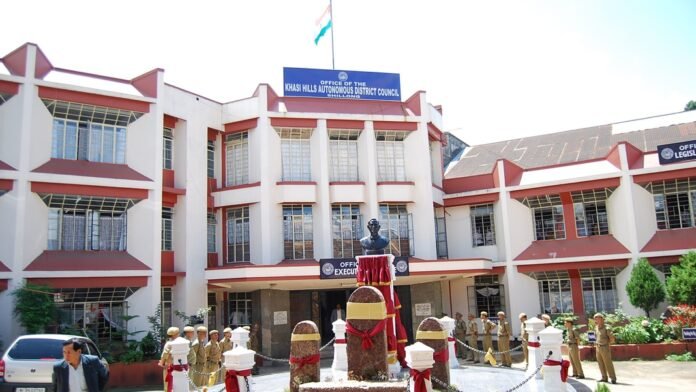The newly elected members of the Khasi Hills Autonomous District Council (KHADC) are set to take their oath on February 27, 2025, marking the official commencement of their term. The oath-taking ceremony will be held at the District Council Hall in Shillong, as per the summons issued by the Governor of Meghalaya.
The swearing-in event will be the first in a series of important meetings scheduled to establish the leadership and administration of the KHADC. The process will culminate in the election of the Council’s Chairman and Chief Executive Member (CEM) on February 28.
KHADC Oath-Taking Ceremony: A New Beginning
The Khasi Hills Autonomous District Council plays a crucial role in the governance and administration of the Khasi Hills region, exercising autonomy in matters related to land, culture, and traditional governance. The upcoming oath-taking ceremony represents the beginning of a new tenure, during which elected representatives will work towards the welfare and development of the district.
The first session of the KHADC, scheduled for Thursday, February 27, at 11 AM, will see all newly elected members take their oath or make their affirmation. This event will set the stage for deliberations and decision-making within the Council for the upcoming term.
Election of KHADC Leadership on February 28
Following the swearing-in ceremony, two critical elections will be held on February 28 to determine the Council’s key office bearers:
- Election of the KHADC Chairman – The session at 11 AM will be dedicated to electing the new Chairman of the KHADC, who will play a vital role in ensuring the smooth functioning of the Council.
- Election of the Chief Executive Member (CEM) – Later in the day, at 2 PM, the Council members will reconvene to elect the Chief Executive Member (CEM), a position responsible for executive decision-making and administration within the KHADC.
Importance of the KHADC in Meghalaya’s Governance
The KHADC is one of the three autonomous district councils in Meghalaya, established under the Sixth Schedule of the Indian Constitution to protect the customs, traditions, and rights of the Khasi community. The Council holds legislative, executive, and judicial powers in specific areas, such as:
- Land and natural resource management
- Customary laws and traditional governance
- Regulation of markets and trade
- Preservation of Khasi culture and heritage
The newly elected KHADC members are expected to focus on strengthening local governance, preserving indigenous rights, and fostering economic and infrastructural development within the Khasi Hills region.
Challenges and Expectations from the New KHADC Leadership
As the new term begins, several key challenges and issues await the KHADC leadership:
- Land Rights and Protection – Ensuring that Khasi tribal land remains protected from encroachment and is used for sustainable development.
- Economic Growth and Employment – Encouraging entrepreneurship and economic activities that benefit the indigenous population.
- Infrastructure Development – Improving roads, markets, and public services across the Khasi Hills.
- Preservation of Traditional Institutions – Strengthening the role of traditional village chiefs (Syiem and Dorbar Shnongs) in governance.
- Balancing Autonomy with State and Central Policies – Ensuring that KHADC policies align with Meghalaya’s broader development goals while maintaining its autonomous status.
A Step Forward for the Khasi Hills Region
The formation of the KHADC’s new leadership on February 27 and 28 will set the foundation for governance over the next few years. With key leadership positions such as the Chairman and CEM being decided, the Council will be in a strong position to implement policies and address pressing concerns faced by the Khasi community.
A New Chapter for KHADC Governance
The upcoming oath-taking ceremony and leadership elections mark the beginning of a major administrative cycle for the Khasi Hills Autonomous District Council. With the newly elected representatives assuming their roles, expectations are high for effective governance, developmental initiatives, and the safeguarding of Khasi cultural heritage.




